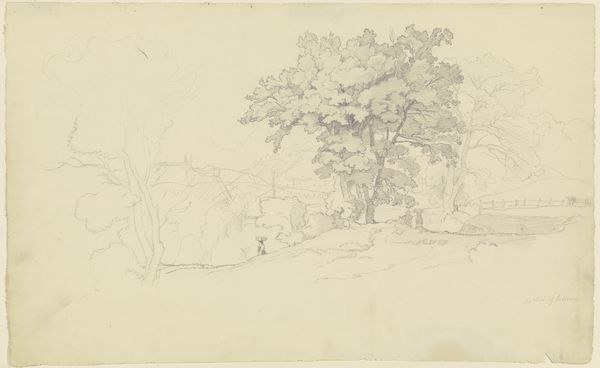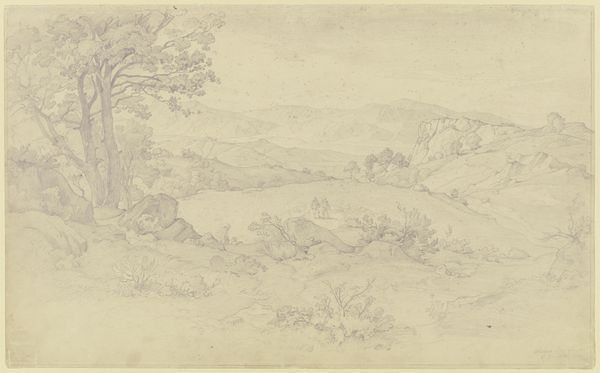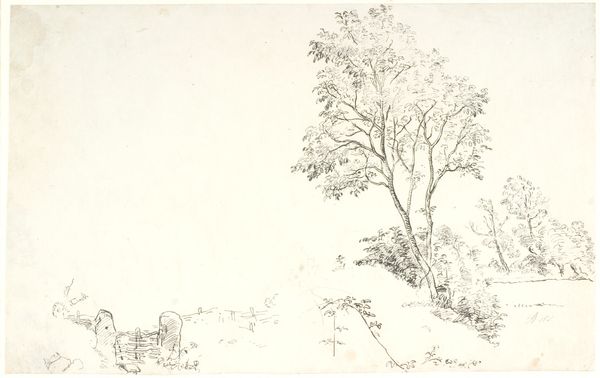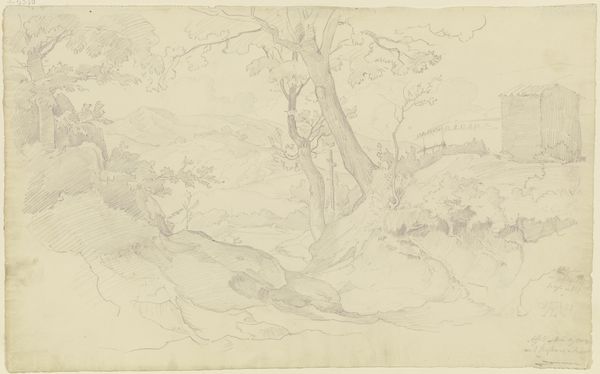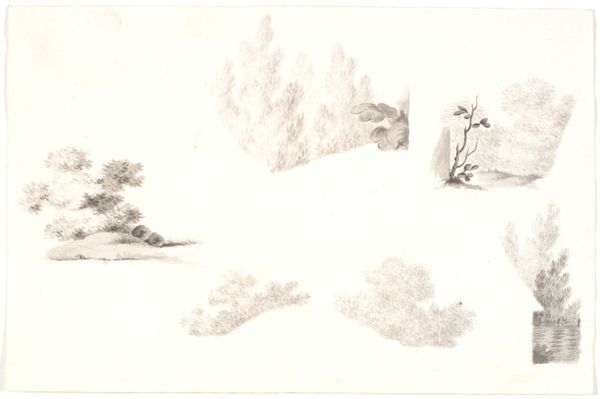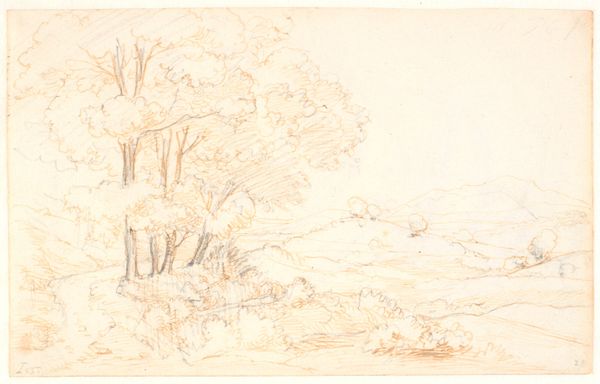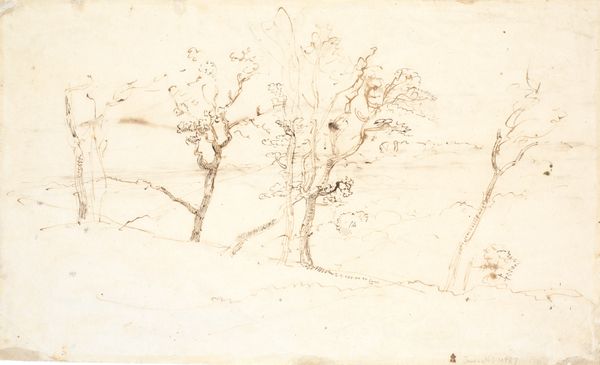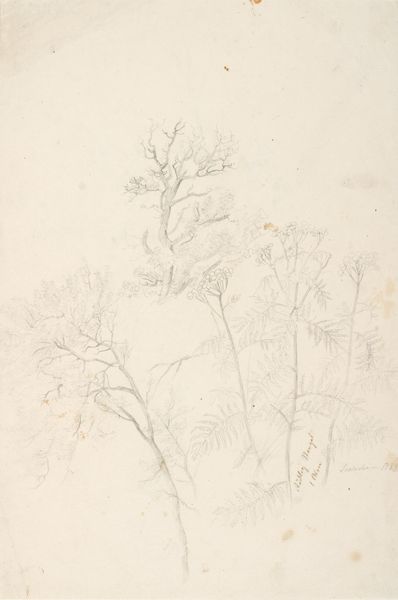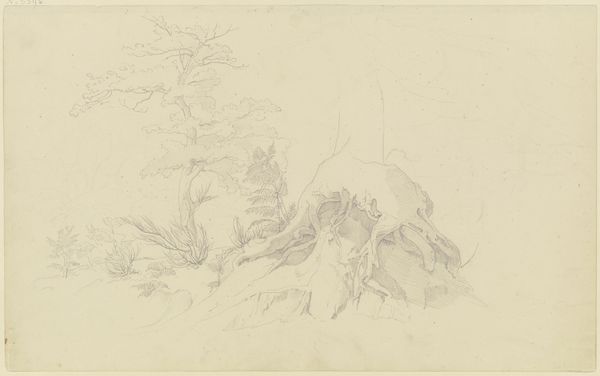
drawing, watercolor
#
drawing
#
landscape
#
etching
#
watercolor
#
romanticism
#
watercolour illustration
Dimensions: overall: 20.2 x 27.5 cm (7 15/16 x 10 13/16 in.)
Copyright: National Gallery of Art: CC0 1.0
Editor: This is David Cox's "Hillside and Trees," a watercolour drawing. It has a very gentle, almost faded quality, and it feels quite open in terms of composition, like we’re looking out onto a very wide space. What strikes you when you view it? Curator: The composition employs a clear distinction between foreground and background, which prompts us to investigate how Cox guides the eye through these visual planes. Observe the tonal gradations; how do they contribute to the recession of space and creation of depth? Editor: I see how the darker washes in the foreground establish the trees, and then they seem to lighten as our eyes move back. Is it a function of how colour represents depth here? Curator: Precisely. Moreover, the deliberate obscuring of detail in the distance contributes to a sense of atmospheric perspective. We might consider this strategy within a larger theoretical framework. Note how he deploys the economy of means – light washes, and rather gestural marks to invoke form and space. How does this inform your understanding? Editor: It makes me consider that even a lack of sharp detail can contribute so much to the sense of depth. He shows rather than tells. Curator: Precisely. It shows how restraint can augment aesthetic impact and conceptual depth. We might also ponder on Cox’s intentional engagement with flatness, despite attempting a panoramic vista. Editor: It's an interesting contradiction – wanting to depict vastness, but maintaining a certain flatness in the image. Thank you. This was insightful. Curator: It's always illuminating to analyze the formal elements that produce pictorial meaning.
Comments
No comments
Be the first to comment and join the conversation on the ultimate creative platform.
